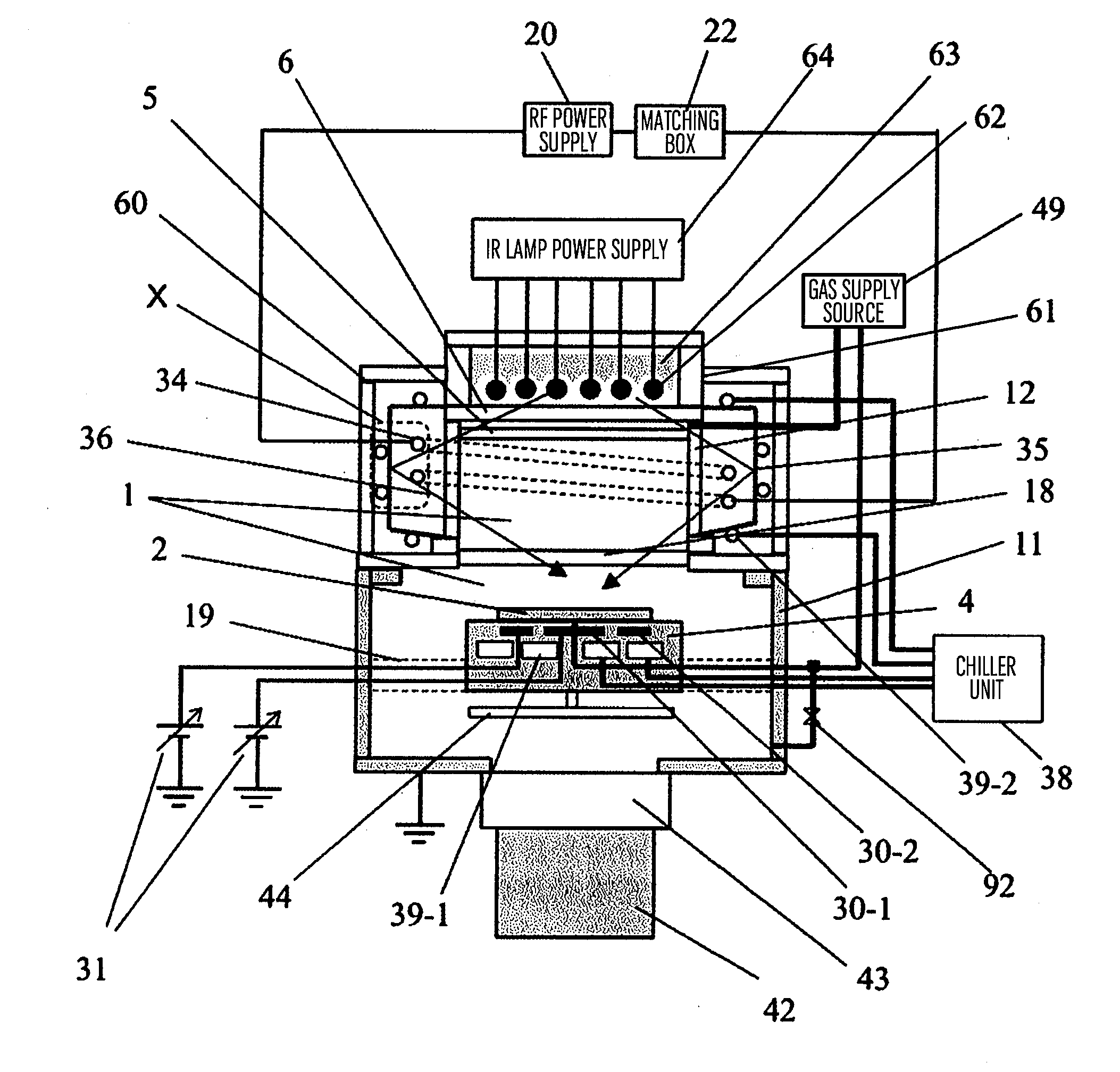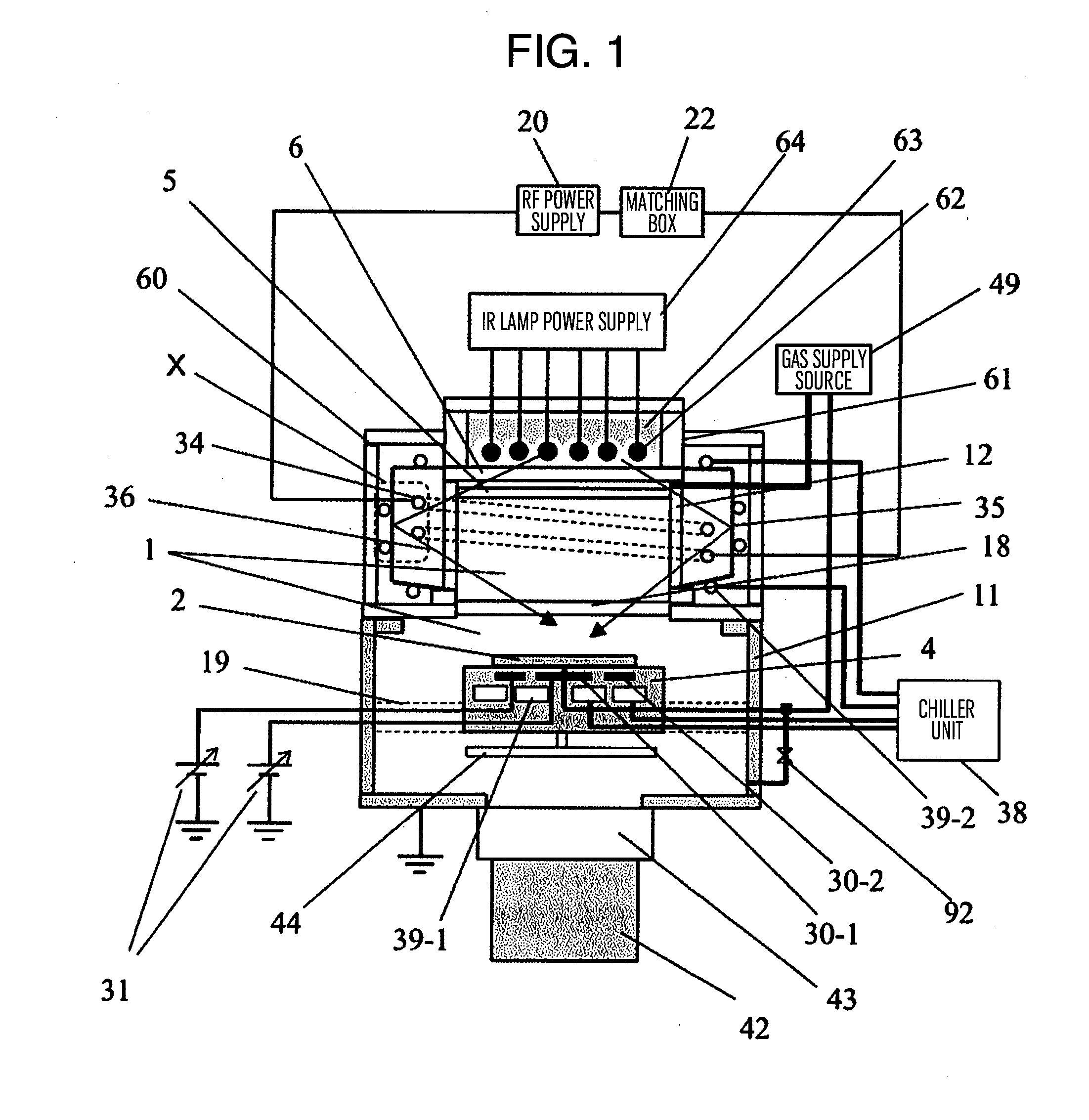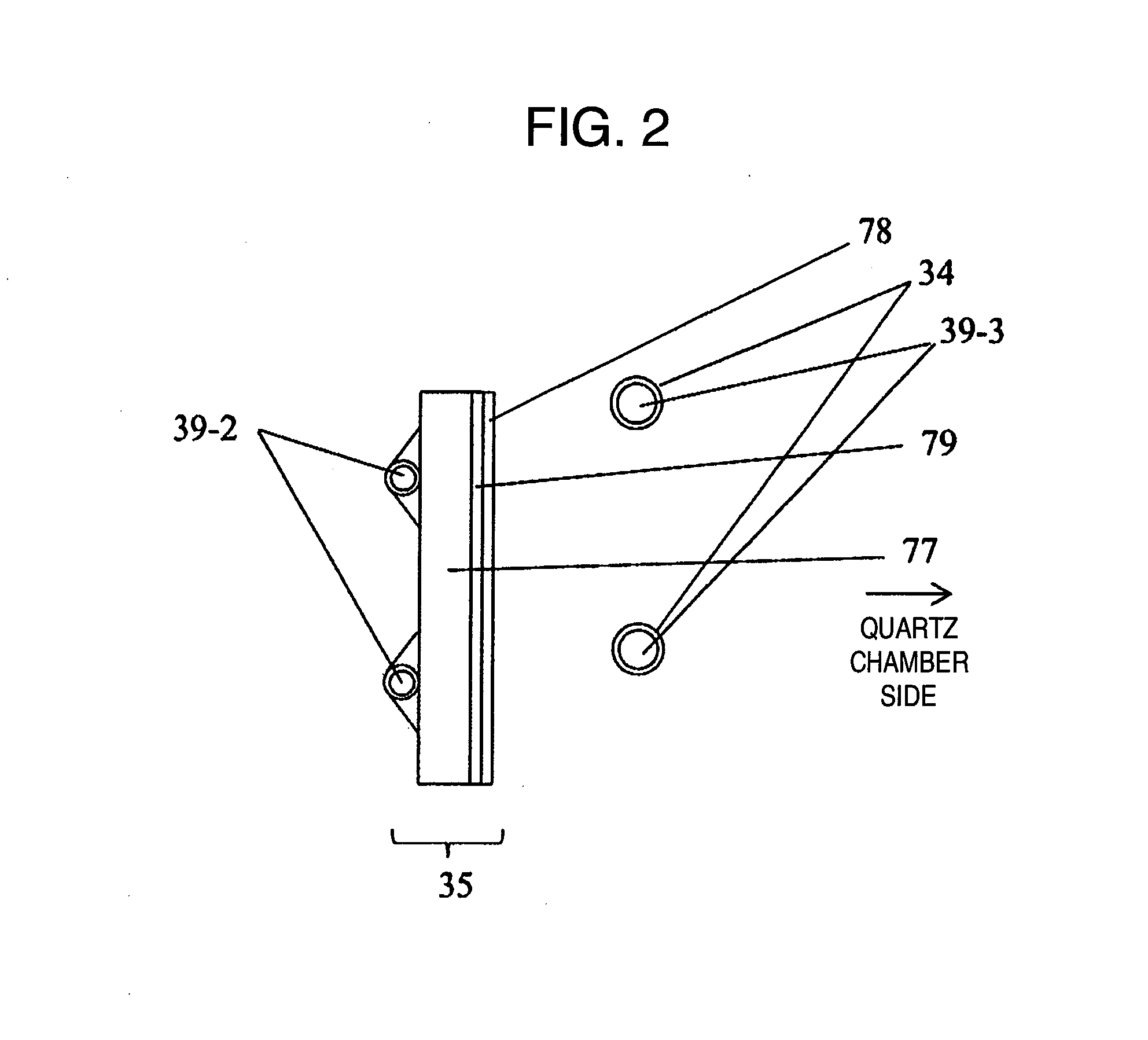Plasma processing apparatus
- Summary
- Abstract
- Description
- Claims
- Application Information
AI Technical Summary
Benefits of technology
Problems solved by technology
Method used
Image
Examples
embodiment 1
[0035]First, an embodiment of the present invention will now be described herein by reference to FIGS. 1 to 10. FIG. 1 is a longitudinal cross-sectional view schematically illustrating an outline of a configuration of a plasma processing apparatus according to the embodiment of the present invention.
[0036]In the plasma processing apparatus according to the embodiment of the present invention shown in this figure, a cylindrical quartz chamber 12 configuring an ICP plasma source is disposed on an upper portion of a base chamber 11 so that the base chamber 11 and the quartz chamber 12 form a processing chamber 1. Below the quartz chamber 12, a wafer stage 4 for loading a wafer is disposed, and is held to the base chamber 11 with an arm 19.
[0037]An ICP coil 34 is disposed outside the quartz chamber 12, and is connected to a radio-frequency power supply 20 for generating plasma via a matching box 22. For radio-frequency power, a frequency in a frequency band of several tens of MHz, such ...
PUM
 Login to View More
Login to View More Abstract
Description
Claims
Application Information
 Login to View More
Login to View More - R&D
- Intellectual Property
- Life Sciences
- Materials
- Tech Scout
- Unparalleled Data Quality
- Higher Quality Content
- 60% Fewer Hallucinations
Browse by: Latest US Patents, China's latest patents, Technical Efficacy Thesaurus, Application Domain, Technology Topic, Popular Technical Reports.
© 2025 PatSnap. All rights reserved.Legal|Privacy policy|Modern Slavery Act Transparency Statement|Sitemap|About US| Contact US: help@patsnap.com



